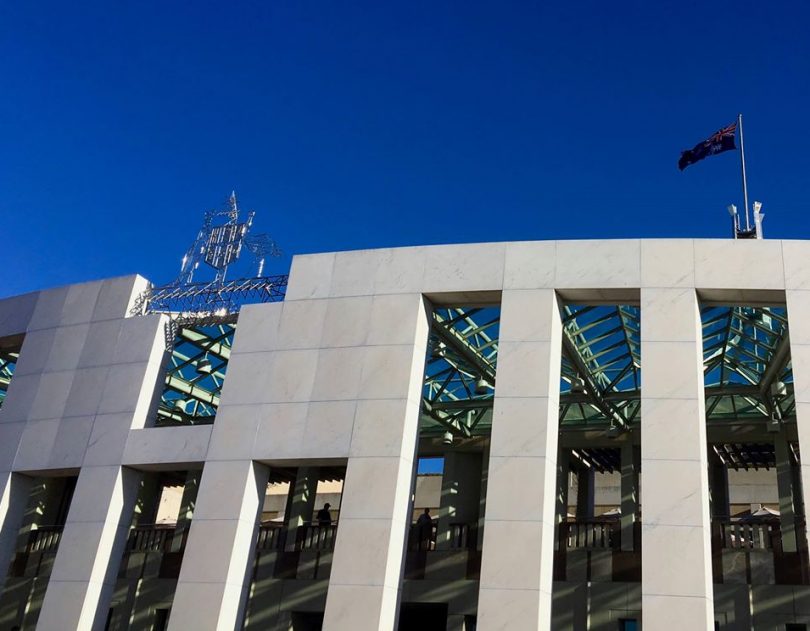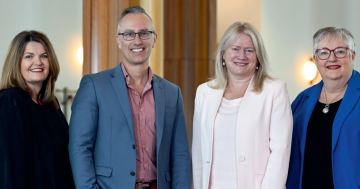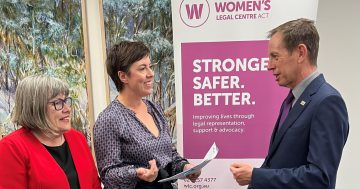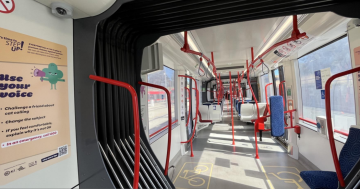
The issues now embroiling Parliament House also occur in the broader Canberra community and workplaces. Photo: File.
I know I’m not alone in finding the constant conflation of ‘Canberra’ with ‘Parliament House’ frustrating. As a proud (almost) life-long Canberran, I know that my home is made of far more unique characteristics than simply housing the national seat of politics.
But I also think we may be too quick to dismiss the recent allegations of sexual assault and harassment issues at Parliament House as a problem removed from Canberra. Despite all the wonderful aspects of Canberra culture, it would be naïve to claim that sexism and gender inequality isn’t a problem here.
There can be no doubt that the allegations of rape and harassment that have plagued political parties and their staff on the Hill point to an endemic issue at the heart of politics. Sexism is rife in politics, and when combined with the long hours, insecurity and power discrepancies at play in political offices, it quickly becomes more sinister. It has resulted in the assault of numerous women who should have been safe and protected within their workplaces.
Daily Digest
But as well as rightfully holding political parties to account, these revelations present an opportunity for all Australians to reflect on the structural gender inequality that continues to exist in this country, and Canberra is no different.
From October to December 2020, ACT Policing had 96 reports of sexual assault across Canberra. Of course, we know that the number of reported incidents are typically lower than the actual occurrence rate because many women won’t disclose their experience of sexual assault for fear of stigma and ongoing consequences – made worse by the fact that many perpetrators of sexual assault are known to the victim.
Ninety-six reports is not a large number over the course of three months. By all accounts, Canberra is by and large a safe and inclusive community. But even one incidence of sexual assault is too many.
We have a tendency in this city to rely on the statistics of the majority to ignore the plight of the minority.
On average, Canberrans are wealthier, healthier, more educated and more progressive than the rest of the country. But rather than using these facts to justify inaction on the basis that there is so little inequality and injustice in Canberra compared with other jurisdictions, why don’t we use our positive starting place to try harder to eradicate abuse and inequality entirely?
Arguably, if we have more resources, awareness and ability in Canberra, we should be in a more enabling position from which to try to genuinely prevent sexual assault and harassment from occurring. This should be a motivating factor, not a justification for inaction.
From a decade of working in the women’s sector, I’m well aware that ending sexual harassment is a complex goal that needs interventions at all ends of the spectrum. The only genuine way to combat it is through primary prevention (teaching young people about gender equality and respectful relationships), secondary interventions (key touchpoints with first time or potential offenders to prevent the behaviour from reoccurring) and tertiary intervention (just, proper and effective punishment for criminal acts of sexual assault and harassment and rehabilitation for perpetrators). That means a whole-of-community response that requires buy-in from us all.
This has to occur across the country, but Canberra still has a role to play. We can do better to ensure that women in our city are safe and supported, and that we continuously work towards a zero incidence rate of assault.
The Canberra ‘bubble’ doesn’t just exist at Parliament House. The majority of Canberrans live in a bubble of privilege and affluence – but those on the other side need our help to be included. We all have a part to play.





















